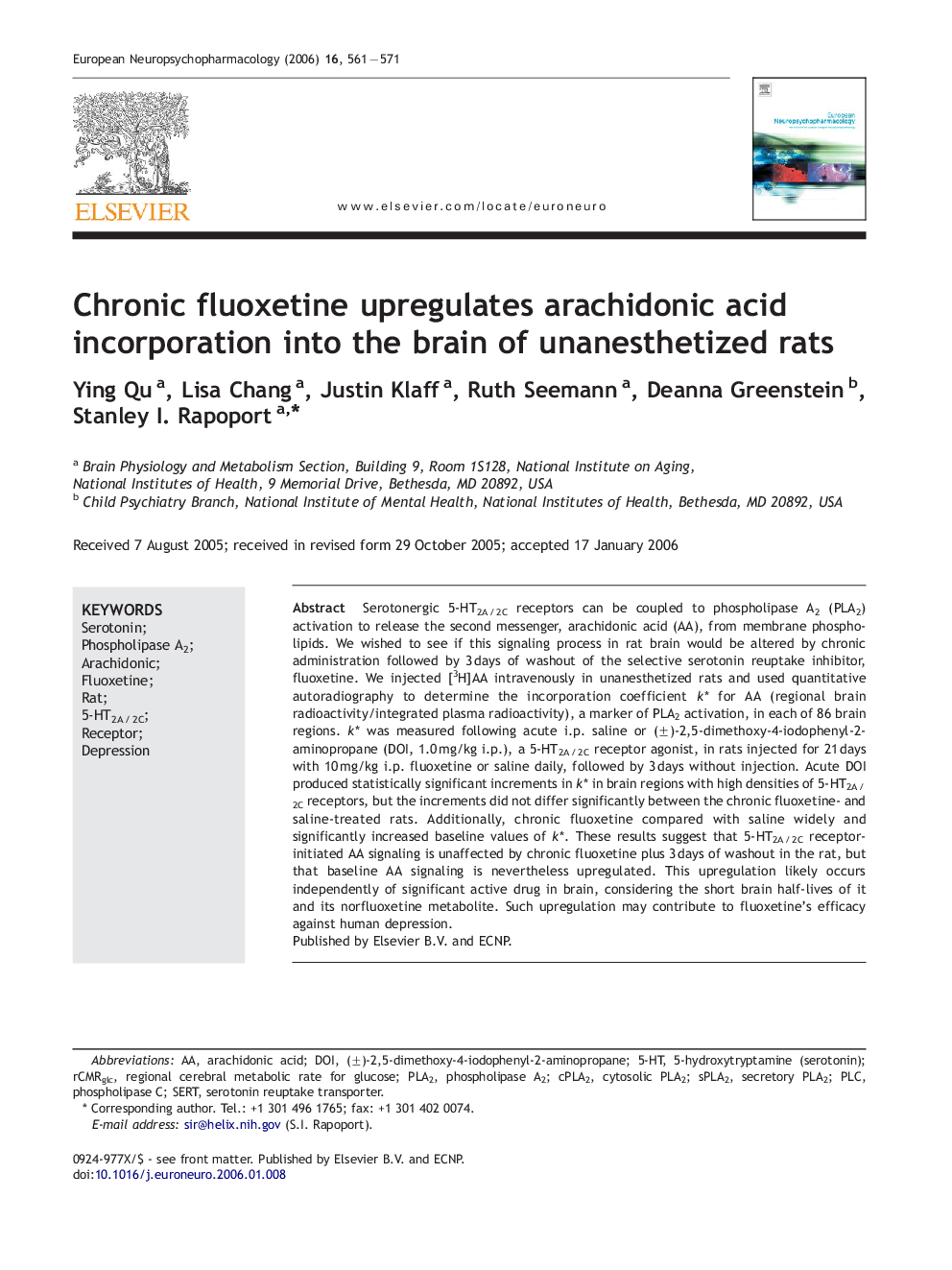| Article ID | Journal | Published Year | Pages | File Type |
|---|---|---|---|---|
| 319257 | European Neuropsychopharmacology | 2006 | 11 Pages |
Serotonergic 5-HT2A / 2C receptors can be coupled to phospholipase A2 (PLA2) activation to release the second messenger, arachidonic acid (AA), from membrane phospholipids. We wished to see if this signaling process in rat brain would be altered by chronic administration followed by 3 days of washout of the selective serotonin reuptake inhibitor, fluoxetine. We injected [3H]AA intravenously in unanesthetized rats and used quantitative autoradiography to determine the incorporation coefficient k⁎ for AA (regional brain radioactivity/integrated plasma radioactivity), a marker of PLA2 activation, in each of 86 brain regions. k⁎ was measured following acute i.p. saline or (±)-2,5-dimethoxy-4-iodophenyl-2-aminopropane (DOI, 1.0 mg/kg i.p.), a 5-HT2A / 2C receptor agonist, in rats injected for 21 days with 10 mg/kg i.p. fluoxetine or saline daily, followed by 3 days without injection. Acute DOI produced statistically significant increments in k⁎ in brain regions with high densities of 5-HT2A / 2C receptors, but the increments did not differ significantly between the chronic fluoxetine- and saline-treated rats. Additionally, chronic fluoxetine compared with saline widely and significantly increased baseline values of k⁎. These results suggest that 5-HT2A / 2C receptor-initiated AA signaling is unaffected by chronic fluoxetine plus 3 days of washout in the rat, but that baseline AA signaling is nevertheless upregulated. This upregulation likely occurs independently of significant active drug in brain, considering the short brain half-lives of it and its norfluoxetine metabolite. Such upregulation may contribute to fluoxetine's efficacy against human depression.
